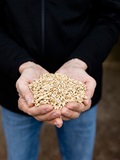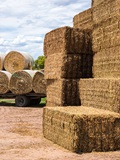Central West NSW
20 May 2020
| Date | CW 23 | CW 22 | CW 5YA |
|---|---|---|---|
| 06-Jan-23 | 264 | 200 | 307 |
| 13-Jan-23 | 275 | 200 | 298 |
| 20-Jan-23 | 285 | 200 | 296 |
| 27-Jan-23 | 293 | 200 | 307 |
| 03-Feb-23 | 303 | 200 | 307 |
| 10-Feb-23 | 318 | 190 | 300 |
| 17-Feb-23 | 319 | 190 | 300 |
| 24-Feb-23 | 320 | 190 | 300 |
| 03-Mar-23 | 325 | 190 | 294 |
| 10-Mar-23 | 333 | 190 | 290 |
| 17-Mar-23 | 333 | 190 | 292 |
| 24-Mar-23 | 333 | 190 | 292 |
| 31-Mar-23 | 338 | 195 | 296 |
| 07-Apr-23 | 343 | 195 | 298 |
| 14-Apr-23 | 343 | 195 | 298 |
| 21-Apr-23 | 343 | 195 | 303 |
| 28-Apr-23 | 348 | 198 | 314 |
| 05-May-23 | 348 | 198 | 315 |
| 12-May-23 | 348 | 199 | 316 |
| 19-May-23 | 348 | 200 | 319 |
| 26-May-23 | 348 | 200 | 320 |
| 02-Jun-23 | 350 | 200 | 327 |
| 09-Jun-23 | 350 | 204 | 327 |
| 16-Jun-23 | 348 | 208 | 327 |
| 23-Jun-23 | 345 | 208 | 327 |
| 30-Jun-23 | 343 | 208 | 341 |
| 07-Jul-23 | 330 | 208 | 342 |
| 14-Jul-23 | 318 | 208 | 342 |
| 21-Jul-23 | 305 | 208 | 342 |
| 28-Jul-23 | 305 | 208 | 343 |
| 04-Aug-23 | 305 | 208 | 344 |
| 11-Aug-23 | 305 | 208 | 355 |
| 18-Aug-23 | 303 | 208 | 375 |
| 25-Aug-23 | 300 | 208 | 374 |
| 01-Sep-23 | 300 | 210 | 367 |
| 08-Sep-23 | 210 | 367 | |
| 15-Sep-23 | 200 | 343 | |
| 22-Sep-23 | 200 | 338 | |
| 29-Sep-23 | 200 | 335 | |
| 06-Oct-23 | 200 | 325 | |
| 13-Oct-23 | 200 | 307 | |
| 20-Oct-23 | 200 | 305 | |
| 27-Oct-23 | 200 | 304 | |
| 03-Nov-23 | 200 | 305 | |
| 10-Nov-23 | 200 | 306 | |
| 17-Nov-23 | 200 | 306 | |
| 24-Nov-23 | 200 | 305 | |
| 01-Dec-23 | 209 | 304 | |
| 08-Dec-23 | 218 | 306 | |
| 15-Dec-23 | 225 | 305 | |
| 22-Dec-23 | 230 | 306 | |
| 29-Dec-23 | 253 | 316 |
Notes:
Change in price is the change since the last report. Hay quoted is sourced and delivered locally, GST exclusive unless stated otherwise. It should be noted that local prices quoted may not be the cheapest available, sourcing it from another region may be more affordable, and buyers are encouraged to evaluate all options. Prices are indicative to a mid-range shedded product, and based on the best indication of market value at the time of reporting. It should be noted there is a wide variation in quality of hay, prices for a mid-range product will not reflect the weighted average of trade. Prices will naturally vary based on the product quantity and quality, buyer/seller relationship and the size of the trade.The hay report has been commissioned by Dairy Australia to provide an independent and timely assessment of hay markets in each dairy region. This report is created using data provided by the Australian Fodder Industry Association (AFIA). It should be remembered that actual prices may vary for quality or other reasons. Whilst all reasonable steps have been taken to ensure the accuracy of the information contained in this report, Dairy Australia disclaims all liability to the fullest extent permitted by Australian law for any inadvertent errors and for any losses or damages stemming from reliance upon its content. Dairy Australia recommends all persons seek independent advice and, where appropriate, advice from a qualified advisor before making any decisions about changes to business strategy.
Commentary
- Light to moderate rainfall this week with an average of 25-30mm of rain across much of the region. With soil profiles saturated, even moderate rainfall is leading to standing water in paddocks.
- Many paddocks now having been flooded, plantings that were expected to take place next week are now being postponed or in some extreme cases being cancelled and the fields left fallow.
- For the paddocks that are wet but still salvageable, some growers are looking to use aerial sowing to reduce paddock damage. However there have been some traditionally sown corn plantings taking place in the north of the region on well drained soils.
- Lupin crops around Lake Brewster are podding up well with full flowering. Canola crops around Peak Hill are coming along well after aerial spraying undertaken, though with less flowering than would normally be expected at this time of the year.
- Growers planning to plant lucerne around Cowra and Canowindra have postponed sowing due to the ground being too wet to guarantee germination. Though on sloping country in the same region, June sown pastures of fescue, phalaris, and red and sub clover are green and lush and are offering good green feed.
- Recent weather conditions have placed silage cutting on hold across parts of the region, however it is expected to recommence in clearer days.
- Fodder demand has flattened due to the combination of wet conditions and the start of the new season. Most demand is in relation to the next season. Deliveries are still arriving from interstate to supplement pasture and remaining on-farm stores.
- No change to pricing this week.
- Cereal hay: +/-0 ($180 to $220/t). Prices remain steady this week.
- Lucerne hay: +/-0 ($305 to $355/t). Prices remain steady this week.
- Straw: +/-0 ($65 to $90/t). Prices remain steady this week.
- Pasture hay: +/-0 ($170 to $235/t). Prices remain steady this week.
- Please note: Unless stated otherwise, prices are per tonne, sourced and delivered locally. The price range indicated is for feeds of varying quality with the price range generally indicative of quality of feed. We recommend feed testing and viewing of fodder before purchase to be sure of the quality of feed.

